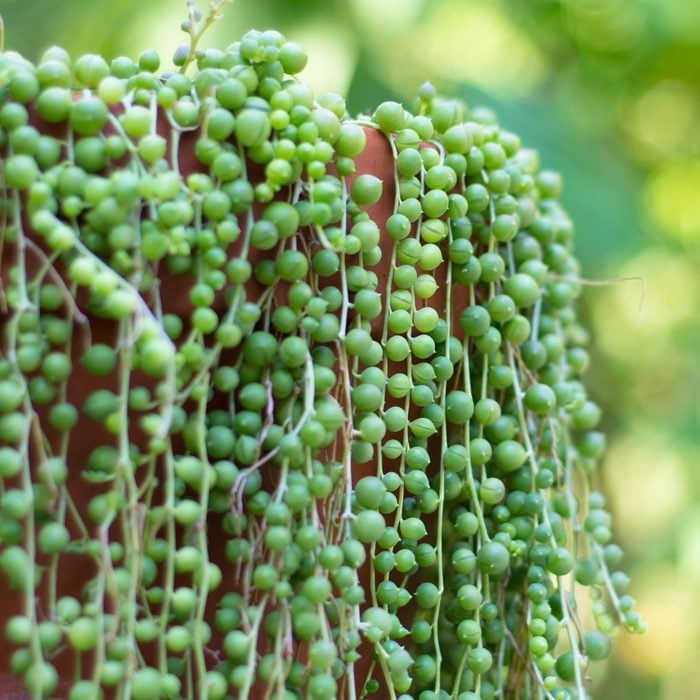
String of Pearls
This funky medium-size succulent grows skinny stems of vibrant green, pearl-like leaves. String of Pearls is perfect for placing on a high shelf in your home, as it drapes over the side of its container. It prefers a lot of sun and, like many other succulents, is very easy to propagate. Even if you keep this succulent in a hanging planter, make sure that it’s planted in soil that drains well.
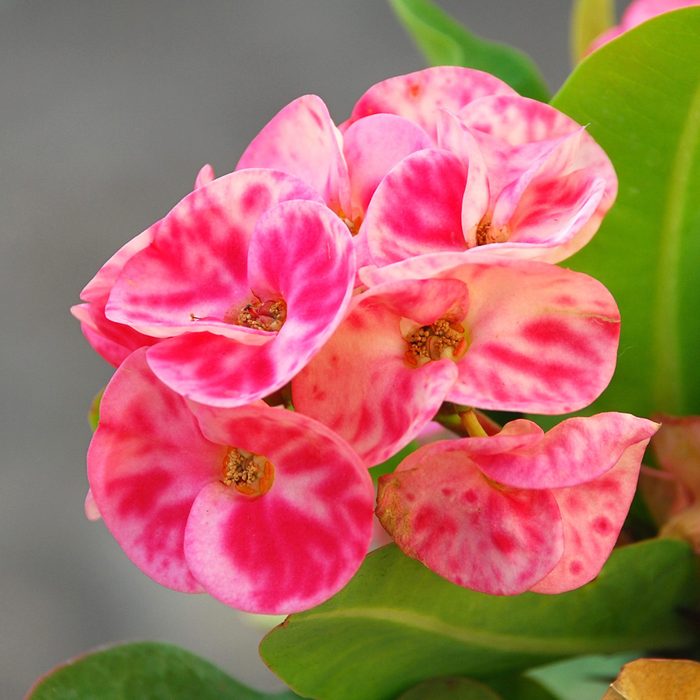
Crown of Thorns
Tiny pink or red flowers bloom almost year-round on this Crown of Thorns, adding a splash of color to any blank space in your home. Wear tough gloves when planting it in a pot of well-drained soil, as its thorns are sharp. And place it near a window, so it gets several hours of direct sunlight each day. On the flip side, here are some houseplants that require very little sunlight.
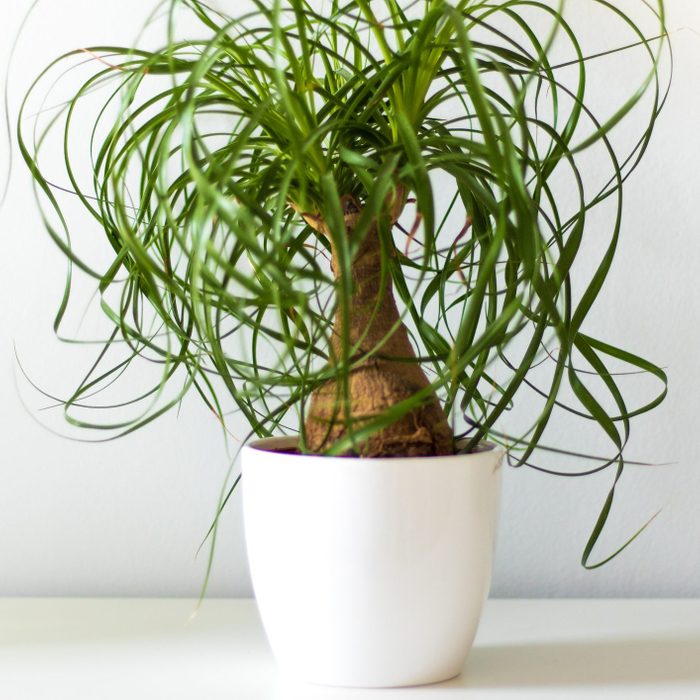
Ponytail Palm
Unlike its name suggests, this plant is not a tree even though it resembles one! The Ponytail Palm succulent has a thick, trunk-like stem that sprouts stringy green leaves out of the top. It requires indirect sunlight and needs very little watering, about every three to four weeks. It’s also nontoxic for both cats and dogs, so it can be placed anywhere in your home, even on the floor. Take a look at these other non-toxic houseplants that are safe for your pets.
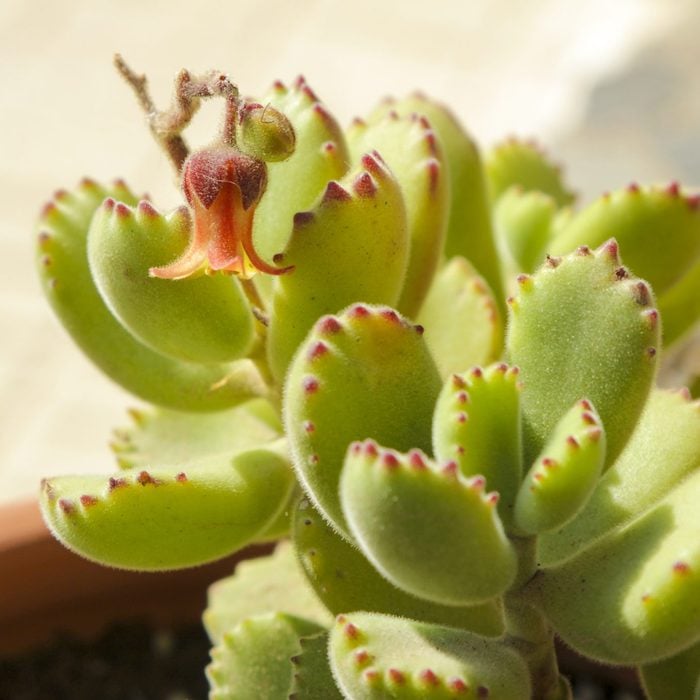
Bear’s Paw
Bear’s Paw is a furry, plump, low-hanging shrub that yields an orange flower in springtime. These succulents are a bit on the rare side, making them a unique succulent to add to your collection. They thrive when exposed to lots of light. Like caring for other succulents, minimal watering is required—it’s best to give them a soil check every few weeks and see if they’re dry. Since they don’t require much water, these succulents are pretty forgiving and easy to care for.
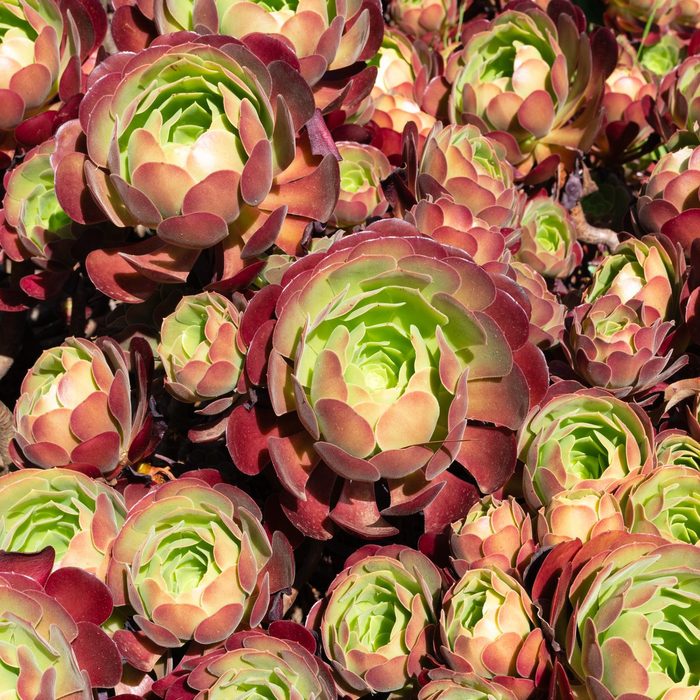
Blushing Beauty Aeonium
Already have a collection of green houseplants? There are a wide variety of pink succulents to choose from, as well as purples, oranges and reds. If you’re wanting to add a variety of colors to your houseplant collection, the Blushing Beauty Aeonium is a great place to start. With waxy leaves in a rosette shape, these succulents are often assumed to be fake plants. They are easy to take care of but prefer more moisture in their soil than other types of succulents.
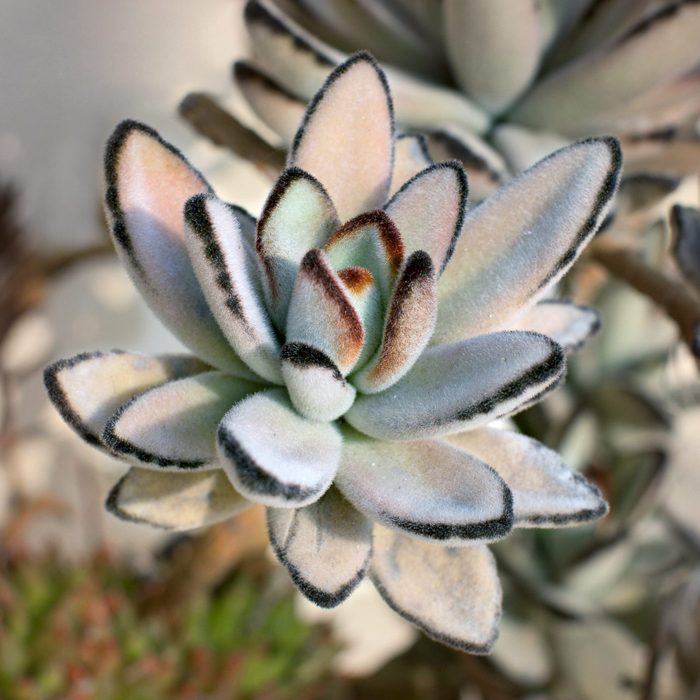
Panda Plant
It is very easy to care for this fun succulent. The Panda Plant stores plenty of water in its thick, fuzz-covered leaves, which means less watering. And the unique velvety texture over light green leaves with dark tips will add an interesting touch to any side table, desk or shelf. This low-maintenance plant requires some sun and infrequent soaking of well-drained soil.
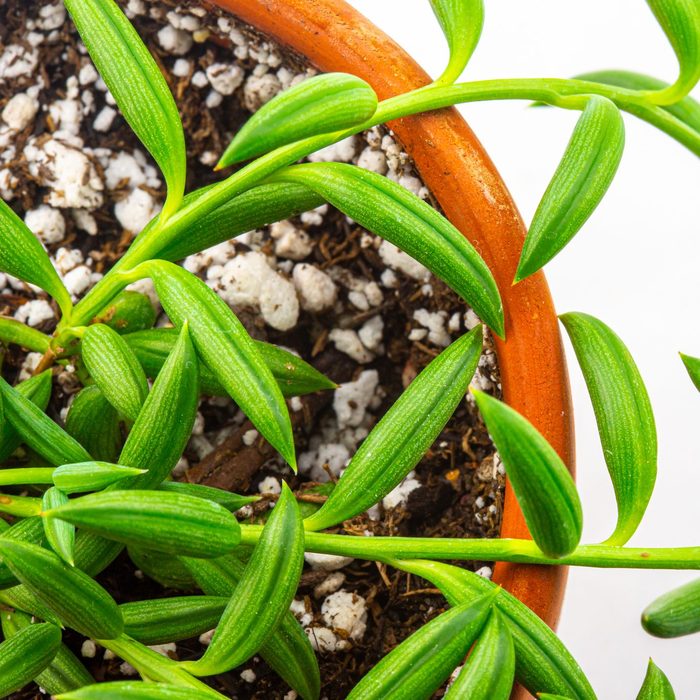
String of Bananas
Perfect for an indoor hanging planter, this succulent has tendrils covered with small leaves that are shaped like little green bananas, hence its name: String of Bananas. Place it in a spot that gets plenty of indirect sunlight and provide a lot of room for it to hang down, such as on top of a tall bookshelf. Water a String of Bananas plant only when the soil is dry to the touch and even less during the winter.
Are you looking for more succulents? Check out this string of dolphin succulent plant to make a splash with your other favorite houseplants.
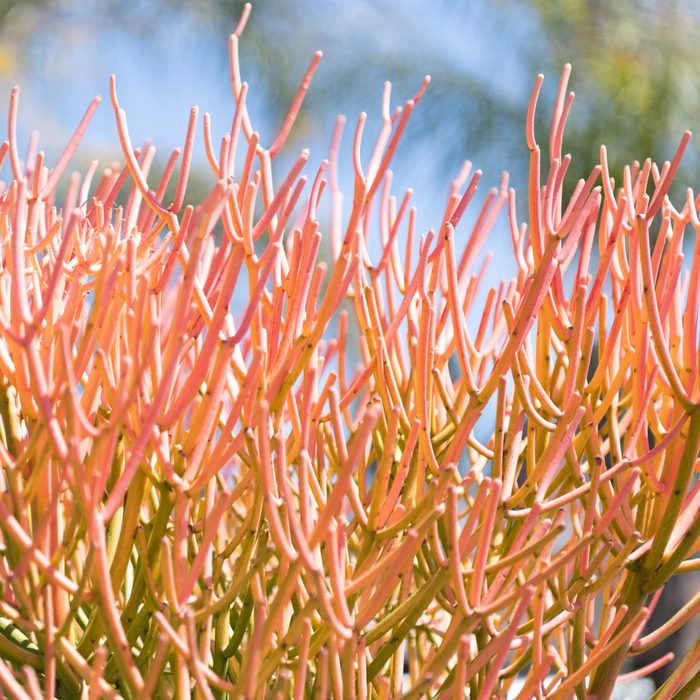
Sticks on Fire
Sticks on Fire are known for their unique shape—they have stems that look like fiery orange-colored sticks. These succulents prefer full sun and weekly watering but are for the most part easy to care for. Be sure to plant this succulent in a cute succulent pot that accentuates its colorful stems.
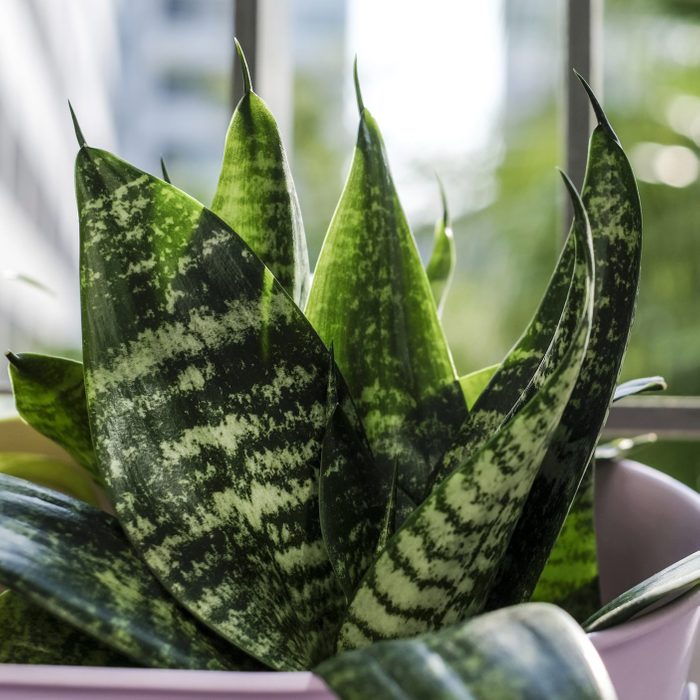
Snake Plant
The Snake Plant is a popular choice for many plant mamas. It features long narrow leaves that are incredibly durable. Considered one of the easiest succulents to care for, the snake plant requires watering about once a month in the winter. It does well in bright spots as well as less bright spots of the home. If you want your snake plant to grow, keep it in a well-lit area. If you like it as a small succulent, keep it in a darker part of the house.
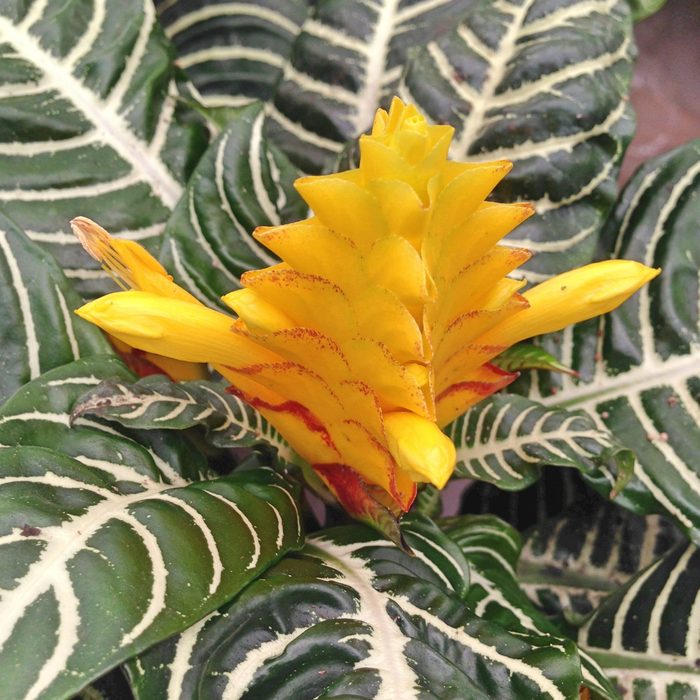
Zebra Plant
The Zebra Plant is an eye-catching dark green succulent with white horizontal stripes along its spiky leaves. It is small, grows slowly and can withstand long periods with no water. It can also handle very dry air, which makes it easy to keep alive indoors. Let the soil completely dry between waterings; then soak it well. (Psst: These recycled glass jars make excellent succulent planters.)
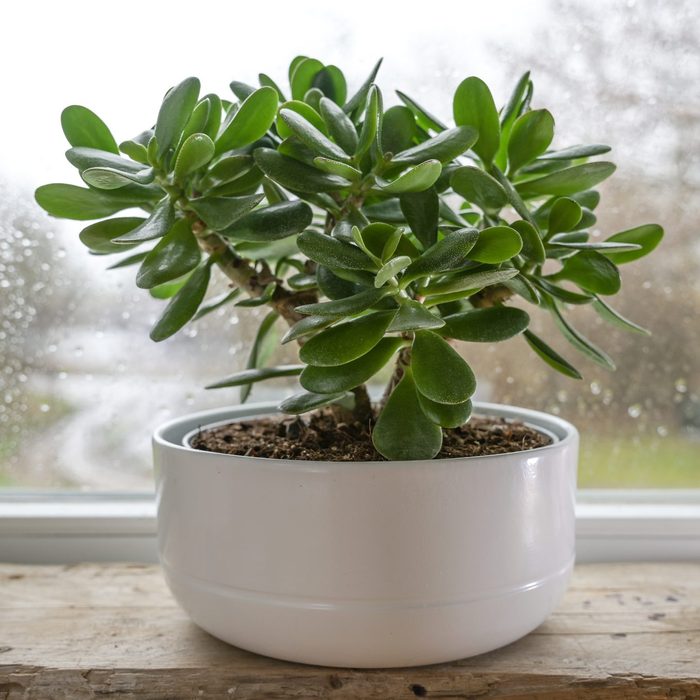
Jade Plant
The Jade Plant, also known as “the money tree,” is a popular houseplant due to its symbolism—it’s thought of as a plant that brings fortune and wealth. Plus, it’s stunning! To help a jade plant thrive, you’ll want to plant it in a wide pot that is a bit more on the shallow side since jade plants tend to grow outward. They require six hours or more of sunlight per day, and in warmer seasons they typically require more water than in the winter season.
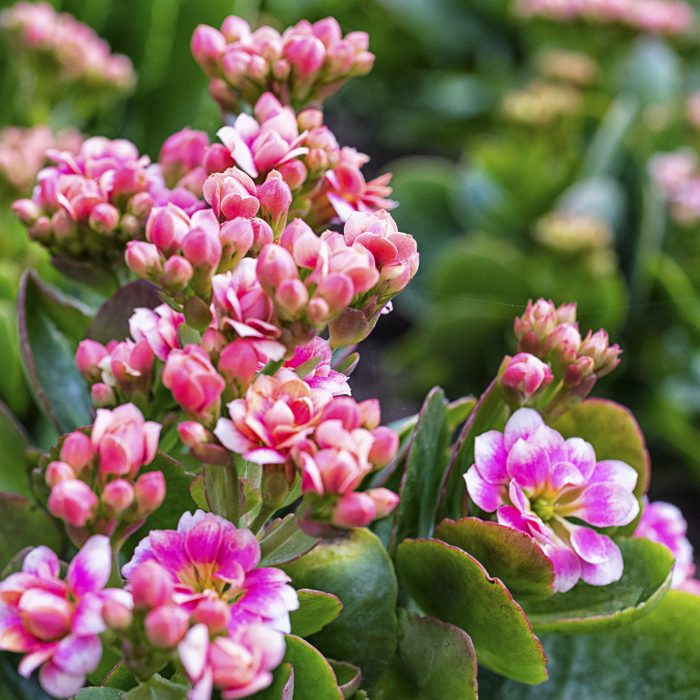
Kalanchoe (Flaming Katy)
Kalanchoe is a popular succulent for its constant floral blooms, so if you like having a bouquet of flowers around, you’ll love growing these little potted flowers indoors. To properly care for Kalanchoe, keep them in direct sun for four hours each day with regular watering and good drainage. When growing succulents with floral blooms, like this one, it’s a good idea to trim the blooms once they begin to fade.
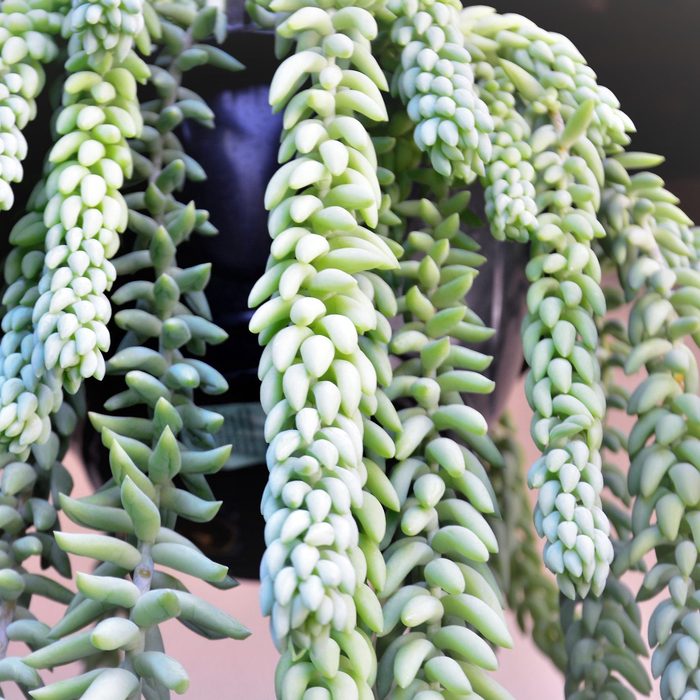
Burro’s Tail
Burro’s tail is a must-have succulent in any home. It adds a fun texture and soft color to your collection with strands of leaves that appear woven together. These plants work great in windowsills or as hanging plants. If you introduce them to the sun gradually, they can thrive in full sun. To help them grow longer strands, give them cactus food in the growing season.
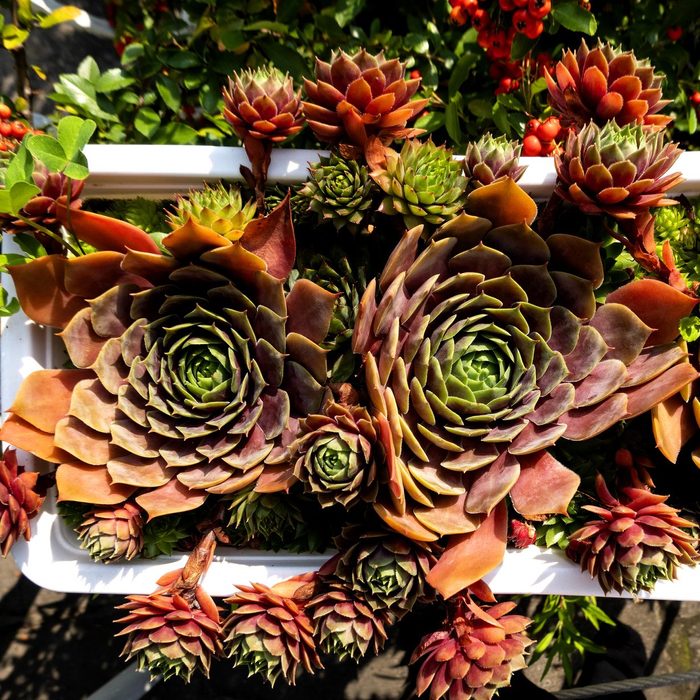
Hens and Chicks
This Hens and Chicks is a classic—it starts out very small and is easy to propagate. The rosettes come in a variety of greens and reds, and they look amazing grouped with other types of succulents in one pot. Like many succulents, these desert blooms thrive indoors and outdoors. When planted outdoors, these succulents attract pollinators, which is a great way to invite birds and butterflies into your garden.
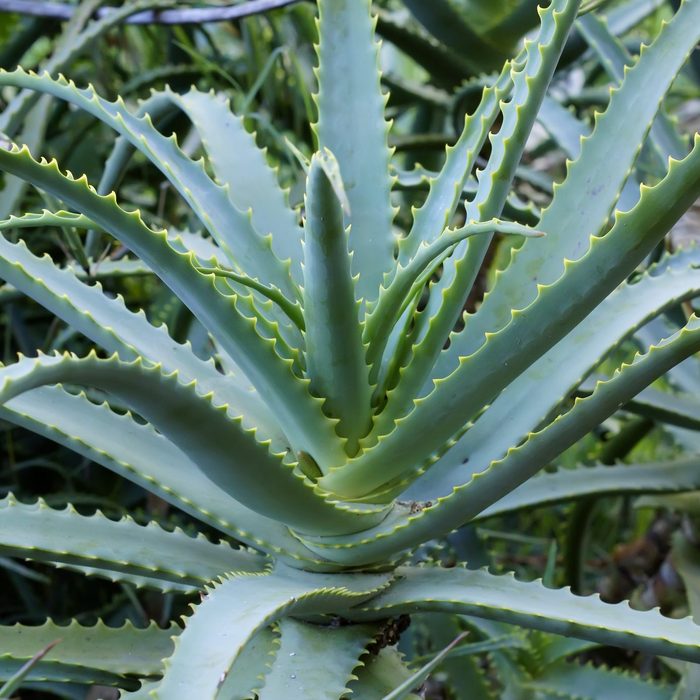
Aloe Vera
This well-known succulent is easy to find and makes a cheerful houseplant. Similar to other succulents, Aloe Vera requires sandy, well-drained soil and plenty of indirect sunlight throughout the day. And it isn’t phased by dry indoor air. Plus, if you get a burn or irritated skin, break off a piece of the plant and put some of the clear liquid inside on the affected area.
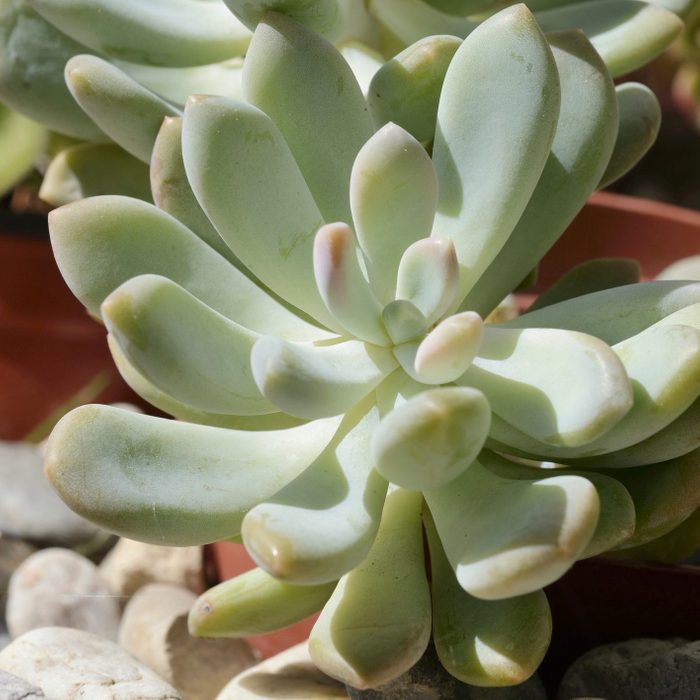
Pachyphytum
Do you often forget to check on your houseplants? You’re in luck! Pachyphytum thrives with very little attention. These succulents only need watering when their soil feels dry to the touch. With leaves that are long and pointed, this style adds sophistication to any space. As soon as your plant is getting a little bit big, give it a trim. Read our guide on how to propagate succulents so that you can multiply your collection.
